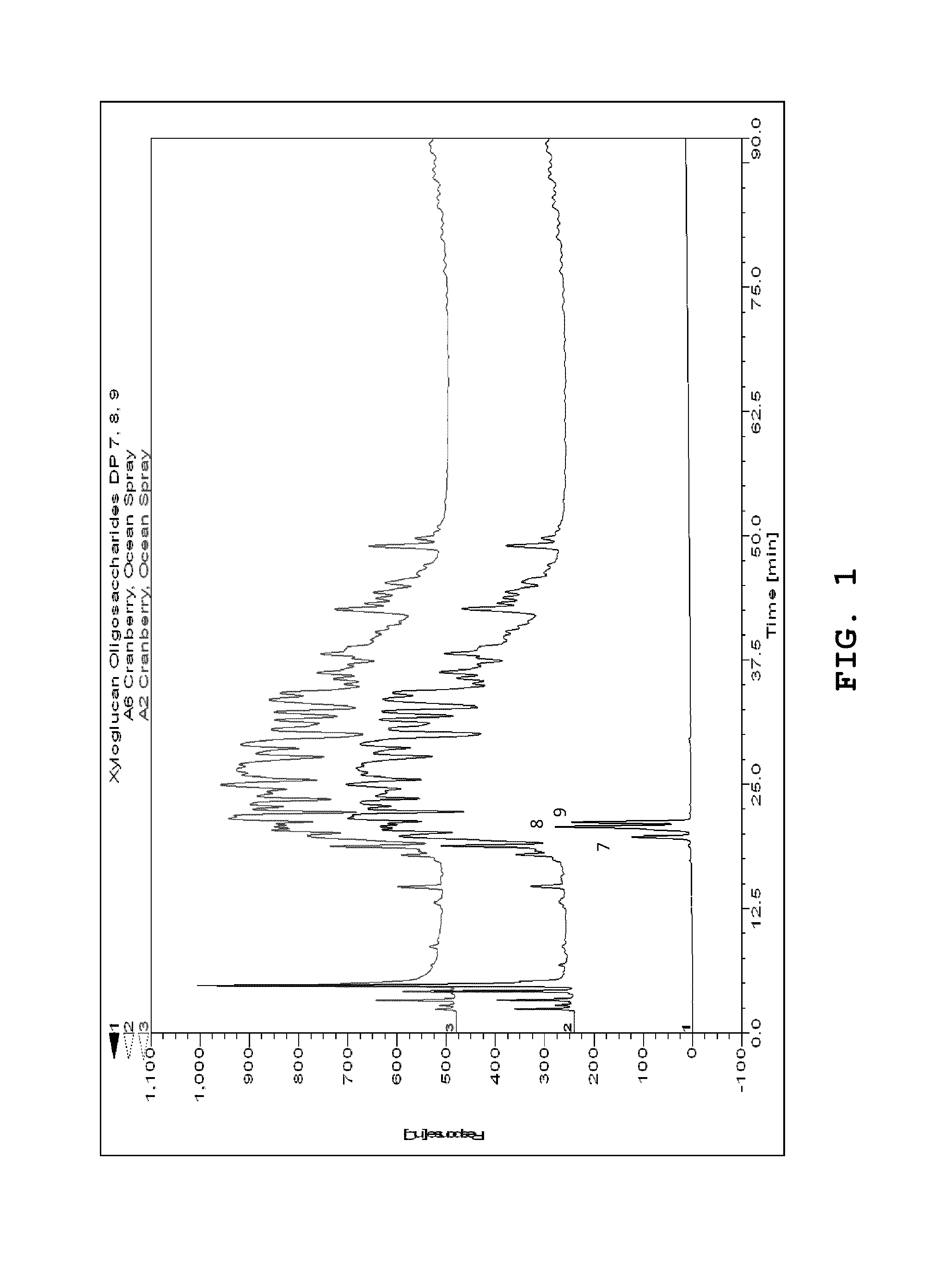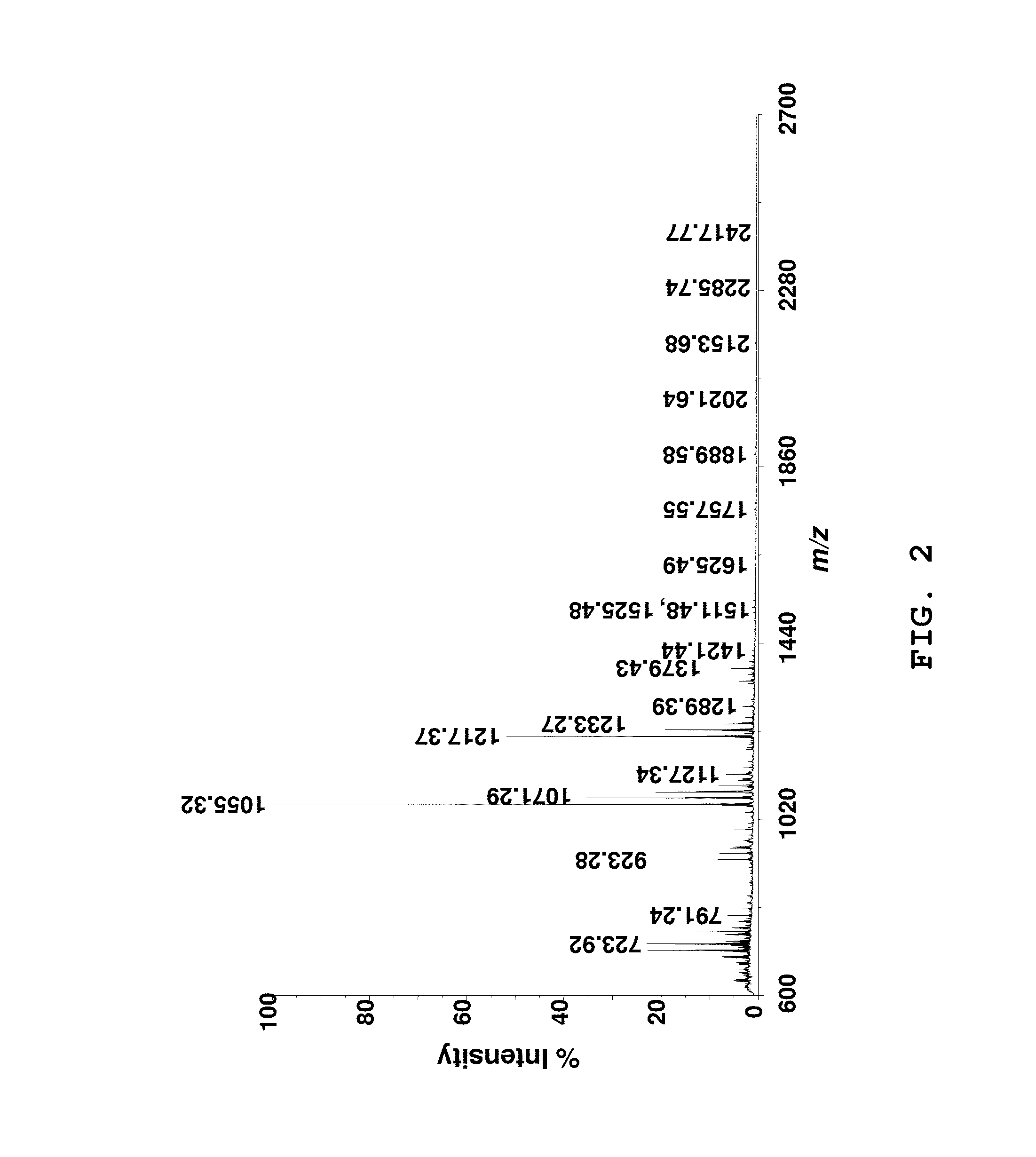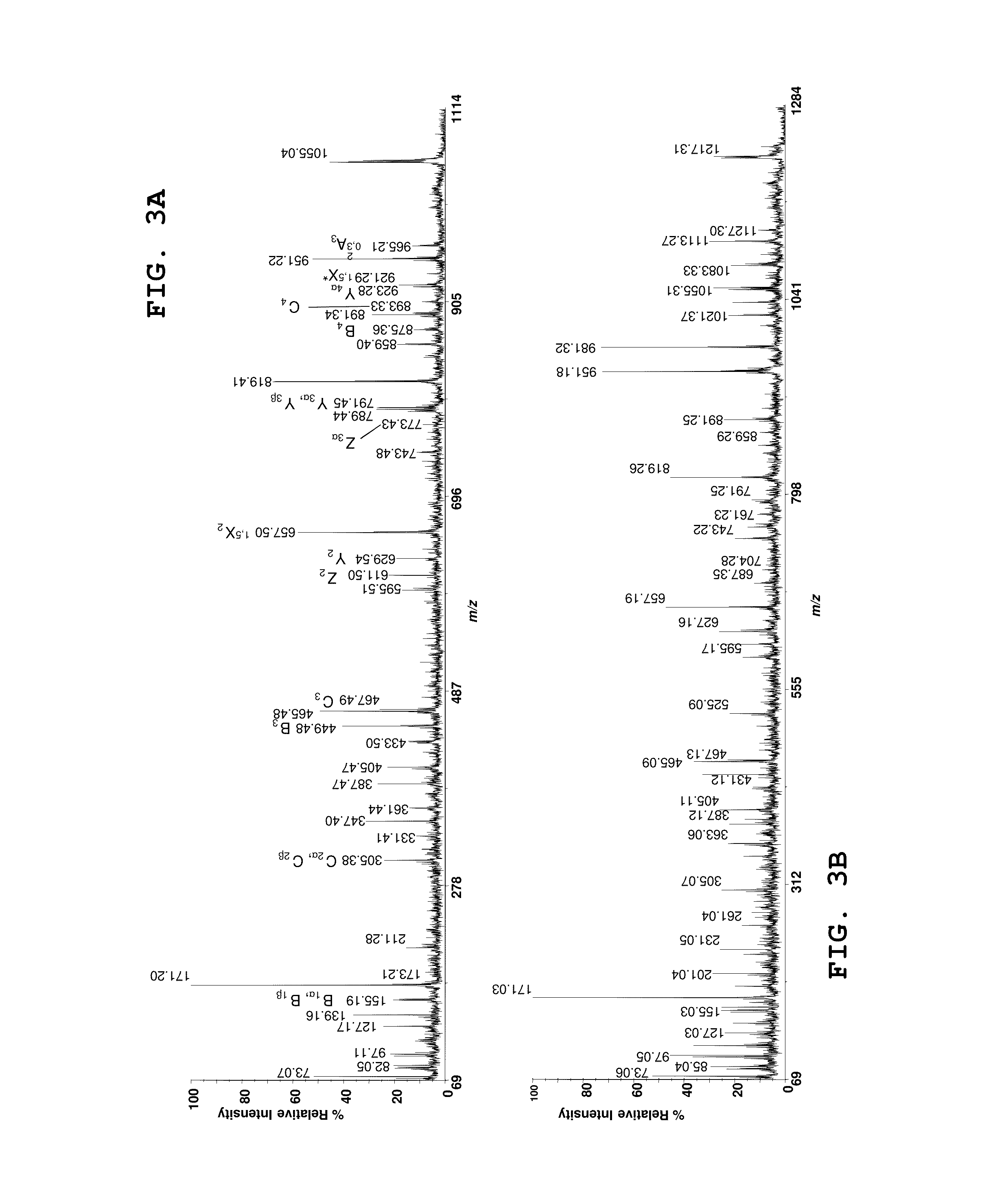Cranberry Xyloglucan Oligosaccharide Composition
a technology of xyloglucan and cranberry, which is applied in the field of new xyloglucan oligosaccharide composition, can solve the problems of life-threatening symptoms, cranberry plant cell wall oligosaccharide structure, and utis, and achieve the effect of reducing the adhesion of microorganisms
- Summary
- Abstract
- Description
- Claims
- Application Information
AI Technical Summary
Benefits of technology
Problems solved by technology
Method used
Image
Examples
example 1
[0043]Xyloglucan-oligosaccharides with a degree of polymerization (DP) of approximately 7 to 9 were purchased from Megazyme (Bray, Ireland). A cranberry hull enzyme-treated concentrate fraction designated A1 was produced using Klerzyme 150 pectinase (DSM Food Specialties) during cranberry depectinization. Fractionation of A1 by C18 Flash Chromatography, produced about a 15% methanol fraction (A2). An unknown peak that eluted at approximately 6.7 min from a HPX-87C HPLC column using refractive index detection was observed in the A2 fraction. There was a pink color associated with A2 that was reduced with LH20 gel column chromatography to eliminate phenolic pigments, which produced A6 In detail, cranberry hulls were treated with Klerzyme 150 pectinase (DSM Food Specialities) or other equivalent pectinase in this family of enzymes. Treatment typically was in the range of approximately 100-140° F. for fruit depectinization. The dose for about a 30-45 minute depectinization was about 0.0...
example 2
[0049]Matrix-assisted laser desorption ionization mass spectrometry with automated tandem time of flight mass spectrometry (MALDI-TOF / TOF MS) was used to determine xyloglucan structure. MALDI-TOF / TOF MS fragmentation of selected ions of oligosaccharides were acquired with a 4700 Proteomics Analyzer mass spectrometer (Applied Biosystems, Framingham, Mass.) in the positive reflectron mode. Spectra were obtained by averaging approximately 100 and approximately 2500 acquired spectra in the MS and MS / MS modes, respectively. Collision induced dissociation (CID) with air at an approximately 1×10−6 Torr, at approximately 1 KeV acceleration voltage was used for obtaining the MS / MS spectra for selected oligosaccharides. Conversion of TOF to mass (Da) for the monoisotopic ions, [M+Na]+, was based on calibration of the instrument with a peptide standard calibration kit (Applied Bio systems). Oligosaccharide samples (approximately 3-5 mg) were dissolved in about 1 mL of water and cleaned with Ca...
example 3
[0053]Nuclear Magnetic Resonance Spectroscopy was used for structural analysis of the oligosaccharides to determine sugar residue identity and connectivity. Fraction A6, obtained from fractionation of the enzyme-treated cranberry hulls described above was dissolved in 2H2O (approximately 99.6% 2H, Cambridge Isotope Laboratories), lyophilized and redissolved in approximately 0.6 mL of approximately 99.96% enriched 2H2O and transferred to a 5 mm NMR tube to obtain a concentration of approximately 5 mM. Most spectra were recorded at about 40 degrees C. on a Bruker Avance-II 700 MHz spectrometer using about a 5 mm xyz-PFG QXI HCNP probe. Data processing was performed using NMRPipe (Delaglio et al., 1994), and analyzed using Sparky (Goddard et al.). All spectra were referenced to the internal 1H and 13C resonances of 4,4-dimethyl-4-silapentan-1-sulfonic acid (DSS). One dimensional 1H NMR spectra were acquired using a spectral width of approximately 5,000 Hz, approximately 32,768 points, ...
PUM
 Login to View More
Login to View More Abstract
Description
Claims
Application Information
 Login to View More
Login to View More - R&D
- Intellectual Property
- Life Sciences
- Materials
- Tech Scout
- Unparalleled Data Quality
- Higher Quality Content
- 60% Fewer Hallucinations
Browse by: Latest US Patents, China's latest patents, Technical Efficacy Thesaurus, Application Domain, Technology Topic, Popular Technical Reports.
© 2025 PatSnap. All rights reserved.Legal|Privacy policy|Modern Slavery Act Transparency Statement|Sitemap|About US| Contact US: help@patsnap.com



